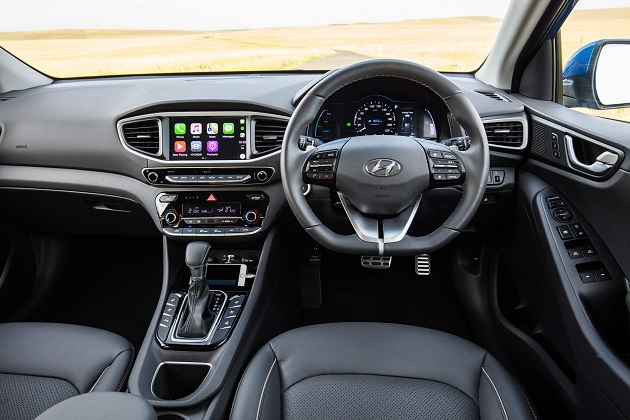By Alex Forrest
You have, of course, been driving around amongst petrol-electric hybrids for more than 20 years.
You may even have been driving one yourself. But they've changed tremendously in that time.
The hybrid vehicle poster child, the Toyota Prius, nowadays utilises electric power much more than it did before. It also uses the least amount of fuel it ever has, and is actually quite sporty.
Now, Hyundai has launched its own take on the petrol/electric hybrid. It’s called the Ioniq, and uses a 1.6-litre petrol engine which gets a boost from an electric motor, which is powered by a 1.56kWh battery located under the back seats.

The regular Ioniq hybrid would be classified as a mild hybrid, because the petrol engine is in use almost all the time while driving, with the electric motor operating mostly in an assistance role, rather than powering the vehicle by itself.
Also setting the Ioniq hybrid apart is its transmission, which is a dual clutch unit as opposed to the continuously variable transmission in most other hybrids.

While the Ioniq can surge a little at parking speeds (a common trait of dual clutch transmissions), the upside is it changes gears in a stepped pattern and doesn’t make the petrol engine drone, like CVTs can.
Hyundai have said all three versions of the Ioniq will be made available in Australia, but pricing wasn’t available at the time of writing.
Combined, the petrol and electric propulsion in the regular hybrid Ioniq make 104kW and 265Nm of torque. Its fuel consumption in the ADR test is 3.9L/100km – just over the Prius’s 3.4L/100km.
By small car standards, the Ioniq hybrid is very well equipped. It has Hyundai’s SmartSense safety package which includes autonomous emergency braking, active cruise control, lane keep assist and rear cross traffic alert.

More importantly, this is just the beginning of Hyundai’s low emissions vehicle onslaught.
| Price (as tested): |
Not available |
|---|---|
| Engine: | 1.6-litre petrol / permanent magnet synchronous electric motor |
| Power (combined): | 104kW (combined petrol/ electric) |
| Torque: | 265Nm (combined petrol/electric) |
| Claimed fuel economy: | 3.9L/100km |
| ANCAP Rating: | Not tested |
